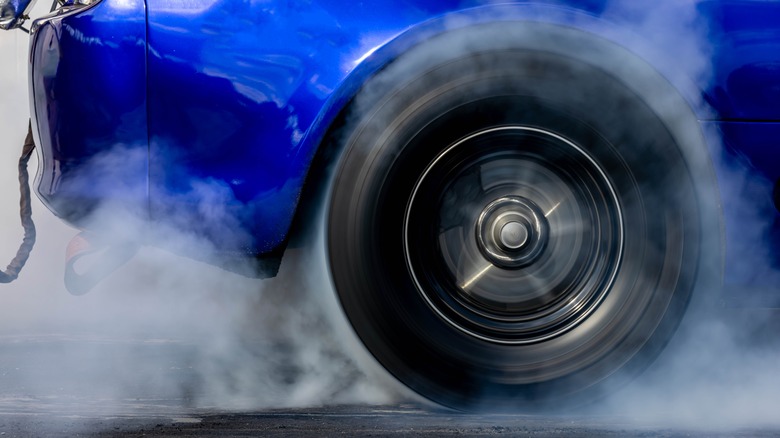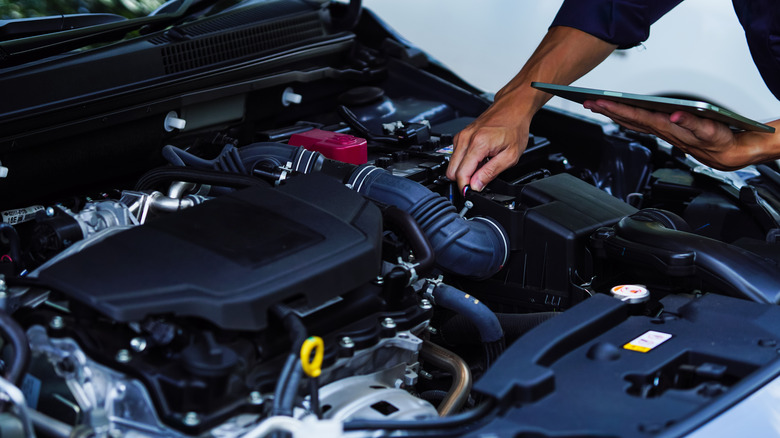Your Car's Engine Can Lose Horsepower Over Time - Here's How
Let's suppose you're looking to buy a used classic car as a daily driver and want something powerful, like a 1960s or 1970s American muscle car. It wasn't uncommon for these vehicles to have 300 hp or more, perhaps even exceeding 400 hp when new. Of course, that last phrase is the operative term here: "when new." What does that actually mean, and why does it matter?
It's fairly intuitive to think about, though it may not be immediately obvious; the more worn-down an engine gets, the less power it produces. This comes down to a huge number of factors, ranging from everything from seals starting to fail to increased levels of friction, from the parasitic drag of rusty parts to buildup on core components like piston heads and valvetrains.
All of these minor issues can compound into relatively major amounts of power seemingly disappearing into the ether, leaving a car with significantly less pep than it was when new. There is no set amount of power loss per year — it mostly varies based on maintenance. Treating a car well and maintaining it decently goes a long way here. It's worth noting that some of the loss can be reversed, too, and you may find that an old car will gain a bit of performance after some TLC. Let's look under the hood and discuss a few examples of the most common sources of power drain and what it means to you, the driver.
The most common power leaks and how they happen
An engine requires three things to run correctly: air, fuel, and spark. The air must mix with the fuel, which then goes into the combustion chamber, which in turn ignites at a certain level of compression before getting sucked out by the exhaust. The result is useful power. Disruption in any of these three areas will sap a car's power to varying degrees. Let's start at the beginning.
Firstly, a car must receive air and fuel and mix the two correctly. This is performed via a car's air intake and fuel pump, both of which have various parts that can wear out over time. For example, an old air filter will restrict airflow and sap power; likewise, a bad fuel pump or fuel filter can lead to incorrect levels of fuel being delivered to the engine, draining power under load.
After all that, the air-fuel mixture must be delivered to the engine, which means going through the valvetrain. A valvetrain that's damaged or fouled with carbon deposits, for example, will also lead to power losses. Igniting the fuel can also prove problematic if the spark plugs are old — fuel must be ignited quickly and thoroughly to prevent unspent fuel from being burned in the exhaust, which causes backfiring.
Lastly, old or damaged exhaust systems negatively impact horsepower because the air can't be evacuated fast enough. Exhaust travels in bursts, which is why cars hum rather than emit a constant droning noise. Blocking the exhaust with buildup in the catalytic converter, for example, means that the air gets jammed up and creates back pressure, resulting in exhaust gases in the combustion chamber or intake.
What this means as an owner
All cars experience wear and tear over the course of their lives; it's why high-mileage oil exists, acting as preventative maintenance to help mitigate these symptoms. As a car ages, certain parts become brittle and scuffed through the many cycles of heat and cold exposure, along with the high levels of forces they experience. Moreover, certain issues, such as poor oil management, can result in factors like metal-on-metal contact, further accelerating this natural degradation process. Engines are mechanical devices with hundreds of moving parts, with each one having the potential for parasitic drain.
Under most conditions, power loss is perfectly normal and expected of high-mileage engines. Unless you're looking to get an engine remanufactured, you should expect an old car to be missing at least some power. That said, if a vehicle seems unusually sluggish or behaves strangely under certain conditions — say, if the power suddenly dies out at high RPMs or under heavy loads — then that could be a sign of a more significant issue.
Mitigating these issues is best handled on a case-by-case basis, but there are a few easy fixes that apply to most engines. Ensuring that the oil is good, the filters are changed, and the spark plugs aren't fouled helps with parasitic power loss. Fuel additives can allegedly help with more substantial issues like carbon buildup, though they don't compare to a full top-end rebuild. But as a general rule of thumb, always expect some power loss no matter what you do; engines break in, just like clothes, and that's generally perfectly normal — as long as there aren't holes in the fabric.


